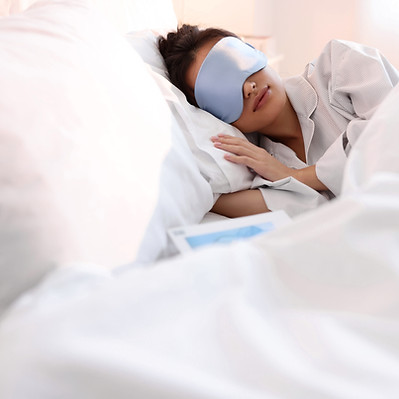Sleep 101: What is it and how does it work?
Tanisha Tonpe | August 5, 2022

Sleep is a function that is essential to human beings. It allows us to recharge both our body and mind. Furthermore, sleep is necessary for our brains to work. In order to sleep properly, make sure you have a sleeping schedule that is consistent. The best time to take a nap is from 1pm -3pm. If you don't want to be groggy, take a 30 minute nap. To fall asleep quicker, sleep in a dark room or with an eye mask. Finally, always make sure to stay warm when you fall asleep, as your temperature drops when you sleep.
There are two main types of sleep, REM (rapid eye movement) and NON-REM. Non REM is quiet sleep. Your brain waves are very synchronized, and your body changes positions every 20-30 minutes. This sleep is referred to as quiet because your brain has minimal Activity. REM is active sleep. Your brain waves are unsynchronized. Your body is paralyzed. This sleep is referred to as "active" because your brain is more active during this sleep.
Sleep comes in 4 stages. The first stage takes up 5% of your sleep. During this stage, you are half awake and half asleep. Your muscles are pretty active, breathing becomes
regular, and your heartbeat slows down. This sleep is easily disturbed. You may hear conversations around but will feel unable to reply. If you wake up during this stage, you will think you never slept. The second stage takes up 40%-50% of your sleep. Your muscle activity decreases, and you lose touch with the outside world. You may hear a conversation but you will not be able to understand it.The third stage takes up 15%-20% of your sleep. You are completely cut off from the world as you can't hear anything. Dreaming (which is usually uncommon during NON REM sleep) occurs during this stage. After around 90 minutes, Stage 4
occurs for the first time. It takes up 25% of your sleep. This stage is when REM sleep occurs and most of your dreaming happens during this stage. You have increased brain activity.
There are many sleep related diseases and disorders, but there are also unusual events that occur when you sleep. Nightmares are vivid dreams that cause anxiety, stress, and fear. Usually, people awakened by nightmares are able to give a detailed account of the nightmare. Nightmares can be caused by many things such as loss of a loved one, stress, etc. Sleepwalking happens when people appear to be awake and moving, but are actually sleeping. He/She doesn’t remember this. This occurs during a deep Non-REM sleep early in the night. Sleepwalking can run in families. Sleep paralysis occurs when people regain consciousness during REM sleep and are unable to move while they are awake. Somniphobia, a fear of sleep can often occur as a result of sleep paralysis. Although there are many theories about sleep paralysis, scientists say it is just a sign that the person is unable to move through the stages of sleep smoothly. Lucid dreams are when a person is having a dream, but are able to realize the fact that they are having a dream. They gain the ability to gain control over their unconsciousness.
–––––––––––––––––––
Sources:
• https://www.sleepfoundation.org/how-sleep-works/why-do-we-need-sleep
• What is Sleep & Why is It Important for Health? | American Sleep Association
• Sleep Paralysis - Causes, Symptoms, Treatment, and Prevention (webmd.com)
